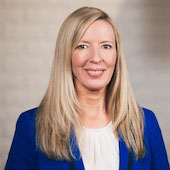Tell us, what is content strategy?
Kristina: There are lots of different definitions floating around out there. It was important to me to talk about content strategy in a way that people can understand easily. I define content strategy as planning for the creation, delivery, and governance of useful, usable content.
Planning is the key. Planning is about asking the right questions to collect data and information, with the goal of delivering a plan that gets you from where you are now to where you want to be.
Content strategy sounds like a big job. What does each element of planning involve?
Kristina: It’s extraordinarily complicated. There are internal considerations, ranging from what the workflow is to what your businesses goals are to what the Web strategy is. The external considerations are just as complex and include how politics are changing and what competitors are doing. You need to put all of these considerations together into an achievable plan.
Content creation considers how to actually create the content, including editorial strategy, messaging, and more. Delivery focuses on technical and structural aspects such as metadata, content modules, and components. At Brain Traffic, we look for two types of content strategists—those who focus on editorial and messaging and those who focus on information architecture and structure.
Of course, a huge part of content strategy is governance. Without it, the creation and delivery don’t matter. Governance is about measuring results, making iterative changes, creating an editorial calendar in line with what’s happening in the business and in the world, and establishing style guidelines.
Could you tell us a little bit about your background and how you became a content strategist?
Kristina: In my 20s, I had a lot of silly jobs. I was in cell phone sales and marketing communications when cellular service became a commodity. That experience was like a mini MBA on the ground. From there, I continued in marketing, sales, and public relations communications for software companies. Around 9/11, I lost my job. I decided to go out on my own. My first contract was for a small Web firm. The more I watched what that firm was doing on the Web, the more I realized their text was not effective. I offered to pitch in and solve the problem. I quickly got a lot of experience as a Web writer—usually called in at the eleventh hour. So, I backed into content strategy in an effort to avoid those eleventh-hour calls.
I think many people assume a writer, a magical fairy, or users will take care of content. Why do you think UX professionals should care about it?
Kristina: I speak a lot about this in presentations. I think user experience has overlooked content and mostly treated it as copywriting. If content is bad, it will be embarrassing for everyone involved, but we haven’t treated it as our problem. We assume marketing or technical communications will take care of it. My goal is to have content strategy be a critical component of user experience.
